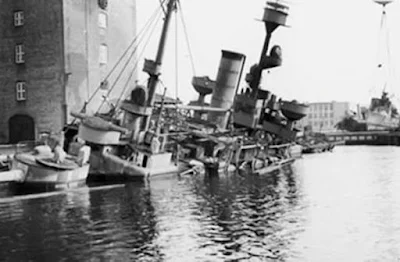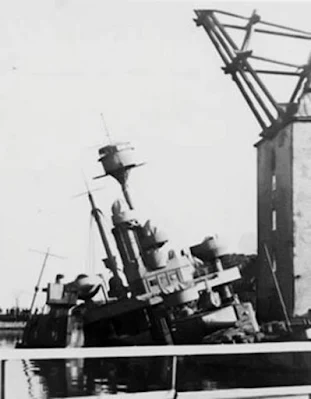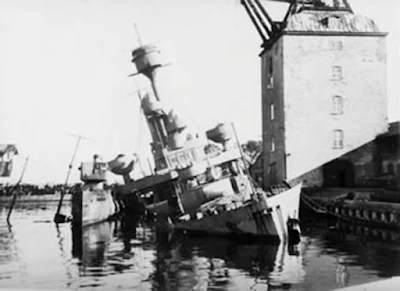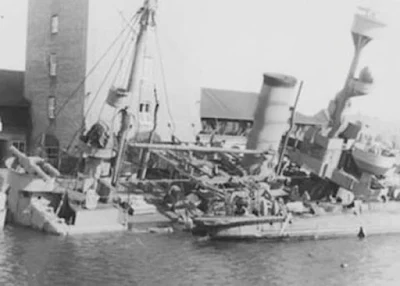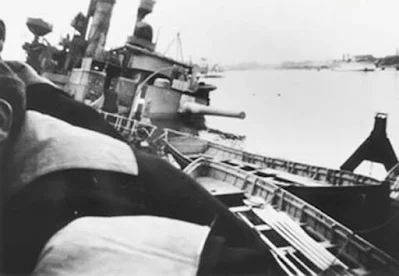 |
| The Danish training ship Danmark. |
The Danmark is a full-rigged ship owned by the Danish Maritime Authority and based at the Maritime Training and Education Center in Frederikshavn, Denmark.
Danmark is 252 feet (77 m) in overall length with a beam of 32 feet (9.8 m) and a depth of 17 feet (5.2 m), with a gross tonnage of 790 tons. She was designed for a crew complement of 120 but in a 1959 refit this was reduced to 80. Although she is equipped with a 486-hp diesel engine capable of 9 knots (17 km/h) in other respects she retains many primitive features: for example, the steering gear lacks any mechanical assistance, and the stock anchors are raised by a capstan rather than a powered windlass. The permanent crew has berths, but the trainees sleep in hammocks.
The Danmark succeeded the København, a five-masted barque which was lost mysteriously at sea at the end of 1928, as Denmark's principal training ship. Launched in 1932 at the Nakskov Shipyard in Lolland and fitted out the following year, she was built to train officers of the Danish merchant marine. In 1939 she visited the United States to participate in the 1939 World's Fair in New York City, but at the outbreak of hostilities in World War II she was ordered to remain in U.S. waters to avoid capture by the Germans. She was then based in Jacksonville, Florida and maintained with the help of the Danish American community there.
After the attack on Pearl Harbor the captain, Knud Hansen, offered the ship to the U.S. government as a training vessel. This offer was accepted, and the Danmark moved to New London, Connecticut to train cadets at the United States Coast Guard Academy there. Approximately five thousand cadets were trained before the ship was returned to Denmark in 1945. Her designation in the U.S. Coast Guard was USCGC Danmark (WIX-283). She resumed her training duties the following year. In recognition of her wartime service, a bronze plaque was placed on the mainmast, and the Danmark was given the honor of leading the parade of ships at the 1964 World's Fair in New York. Experience with the Danmark led to the acquisition of the USCGC Eagle from Germany at the end of the war as a training vessel.
Training voyages continue to be offered, not only to Danes but also to those of any nation interested in learning the basics of seamanship on a large sailing vessel.
The ship was one out of seven ships that was used for filming in the British BBC TV-series Onedin Line (1971-1980).
Name: Danmark
Owner: Danish Maritime Authority
Builder: Nakskov, Lolland
Launched: 1932
In service: 1933
Status: In active service as of 2016
Tonnage: 790 GRT
Length: 252 ft (77 m)
Beam: 32 ft (9.8 m)
Draft: 17 ft (5.2 m)
Propulsion: Diesel engine, sails
Sail plan: full-rigged; 26 sails
Complement: 15 crew; 80 trainees
 |
| The Danish training ship Danmark in Copenhagen Harbor, 1939, by Vilhelm Karl Ferdinand Arnesen. |
 |
| U.S. Coast Guard Academy cadets training aboard the Danmark during World War II. |
 |
| Plaque given in appreciation of the help to the U.S. Coast Guard by the Danish training ship, Danmark. |














